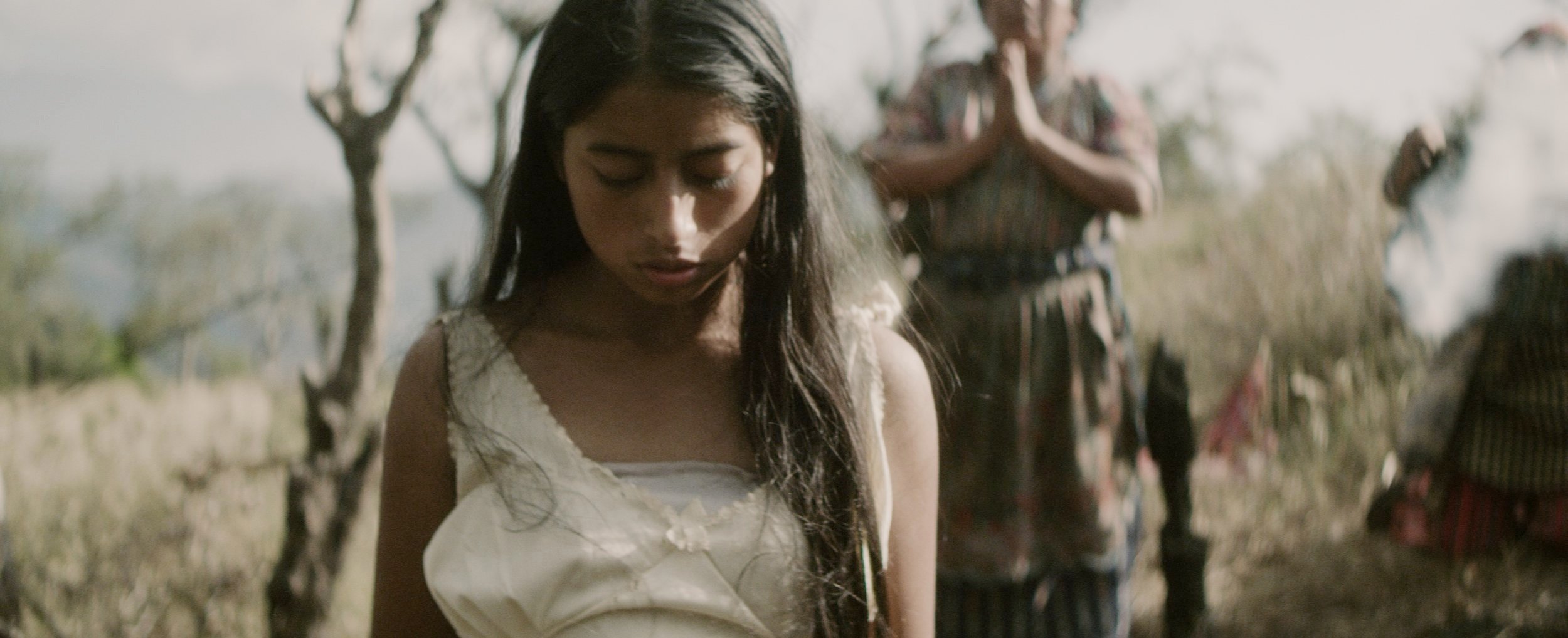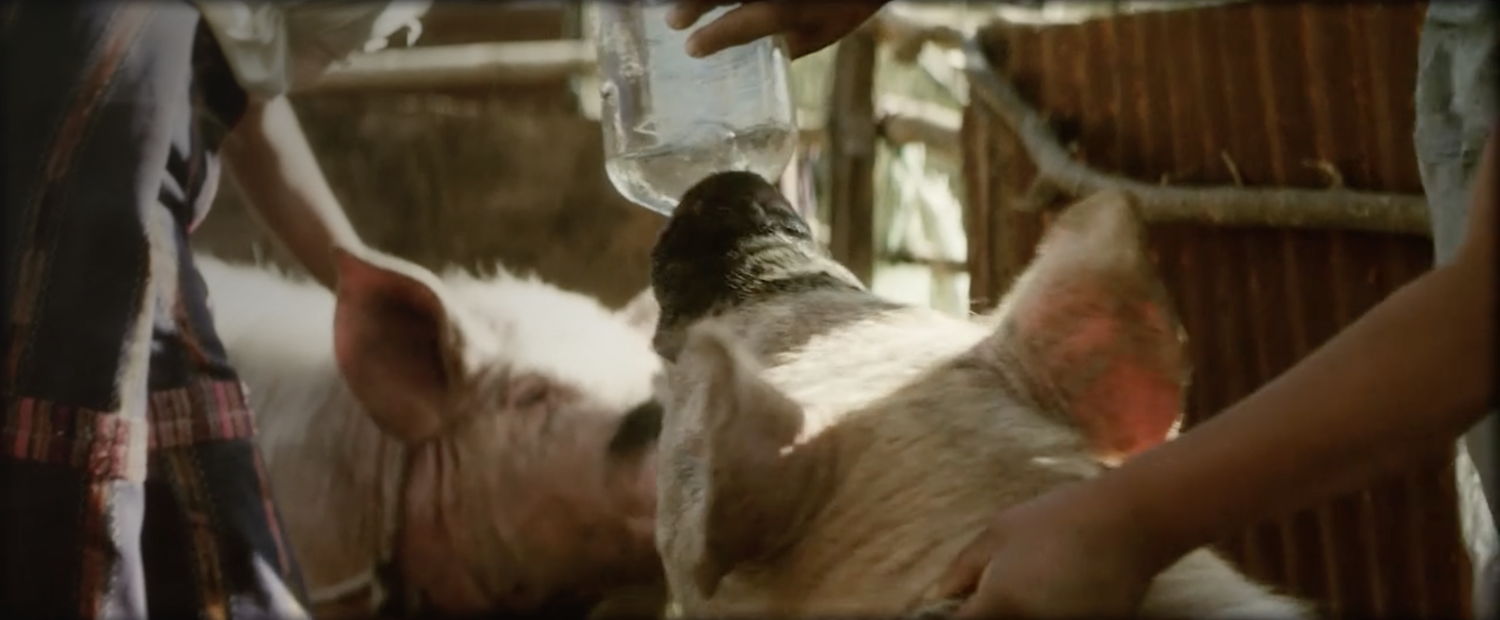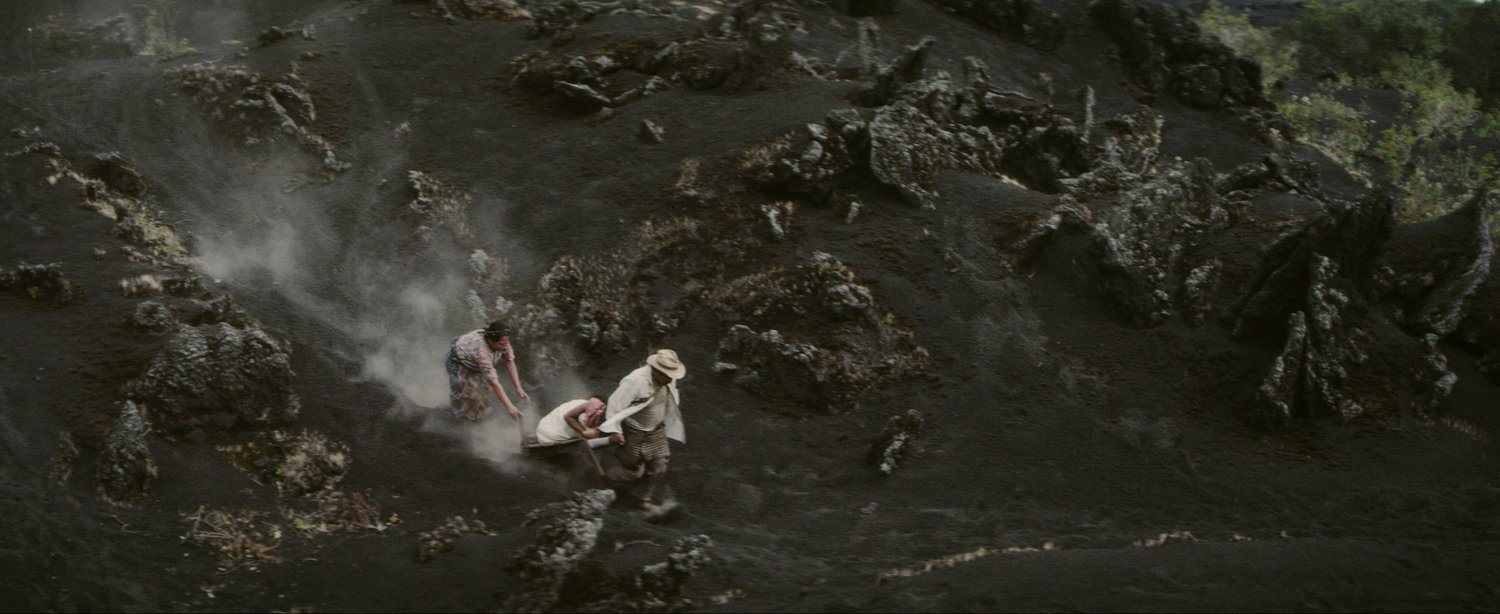Precarious Life at Ixcanul Volcano
Ixcanul, Jayro Bustamante (2015)
Following the credits sequence of Ixcanul, two indigenous women are seen wrangling an ornery pig. In close-up the hog shrieks and squeals, digging its hooves into the dirt, exerting its pressure against the rudimentary rope that holds it. The camera cuts to a dusty field, where adolescent María and her mother Juana pull the animal up a slope, then deposit it in a mating pen. "They don't want to do it," María reports to her mother, who returns with two glass bottles. "Rum will make them horny." It does indeed; the pigs are shortly apt for the task. María remains watching ambivalently, the wind blowing through her hair, sweat glistening on her skin in the hot midday sun.
Guatemalan filmmaker Jayro Bustamante's accomplished first feature Ixcanul provides a mesmerizing and ultimately shattering lens into the quotidian existence of a Mayan family, of which María is the sole child. Filmed on location with non-professional actors, and harnessing luminous cinematography alongside enveloping aural textures, Ixcanul premiered in Competition at the Berlinale where it won the Alfred Bauer Prize, granted to films that "open new perspectives on cinematic art." Yet the perspectives offered by Ixcanul are not necessarily new—rather, these are ancient viewpoints that have been systematically marginalized in the canon of contemporary cinema. "Across Latin America, directors, film collectives, and communities alike strive to forge spaces of representation in a media climate which remains to this day saturated with condescending and violent portrayals of Indigenous people," notes Charlotte Gleghorn, and similarly what is at stake in Ixcanul is not an ethnographic perspective, but the cinematic representation of precariousness in which natural ecosystems, animal life, and human bodies are mutually, if asymmetrically, exposed.
Ixcanul, Jayro Bustamante (2015)
Like the pig's obstinate body, the film's protagonist, María, is photographed in various postures of resistance to circumstances over which she has little control, in escalating states of duress. The film's opening montage intersperses this act of facilitated porcine copulation with scenes of María being adorned then engaged to Ignacio, the owner of the coffee plantation where her family lives and works. María's countenance remains conspicuously expressionless throughout this ceremony, as the two families joyously feast on roasted pork. The meat in question has been sourced from the pig that, having performed its desired function, was summarily slaughtered and rendered into edible matter.
In contrast to scenes with her soon-to-be husband, María animates when in the presence of Pepe, a boy her age who is also employed harvesting coffee beans on the plantation. Pepe declares that once he's saved enough of his wages he will depart for the United States, where he believes a brighter future awaits him. María begs Pepe to bring her along, a petition he claims to consider if she'll give him "a taste." She sneaks out one night to find Pepe in a local cantina, heavily intoxicated, and after imbibing some rum herself María lies down on the earth with him. In a manner that is not particularly redemptive, the film foregrounds the materiality of María's body and thus correlates it with that of the pig, both articulated in terms of their use-value. María's fecund female body serves as the basis of her relations with these two men—a site of plenitude and promise, first celebrated, then feared. Following her consummation with Pepe, María finds herself abandoned and pregnant.
Ixcanul, Jayro Bustamante (2015)
Pepe's actions confirm the entrenched power dynamics that characterize relations between men and women in Latin America, while calling forth new forms of precarity. One need look no further than Diego Quemada-Diez's nuanced and harrowing La Jaula de Oro (2013) to envision the pervasive registers of violence that await Pepe on his journey north—and within the United States, if he manages to survive. Rather than pursuing this trajectory, Bustamante's film remains with María, in Guatemala. Juana brings María to the base of the trembling volcano, where she provides a homemade elixir to induce a miscarriage. María's child continues to grow nonetheless, and its existence is chalked up to fate.
Anxiety surrounding María's concealed pregnancy—the inevitable disclosure of material signs of her fertility—coincides with another material threat lurking within the abundant landscape itself. Ignacio's plantation has become infested with poisonous snakes, and his laborers refuse to work. María's parents stake the family's survival on their ability to rid the land of this threat. As María walks across a field shrouded in smoke, immersed in the hum of insects and the murmuring of voices at prayer, the ritual initially appears to have worked. Yet soon she is being transported to an even more perilous landscape—from the lush fields of the highlands, through a vista of volcanic soil, to the back of a pick-up truck en route to Guatemala City—as venom courses through her veins.
Ixcanul, Jayro Bustamante (2015)




